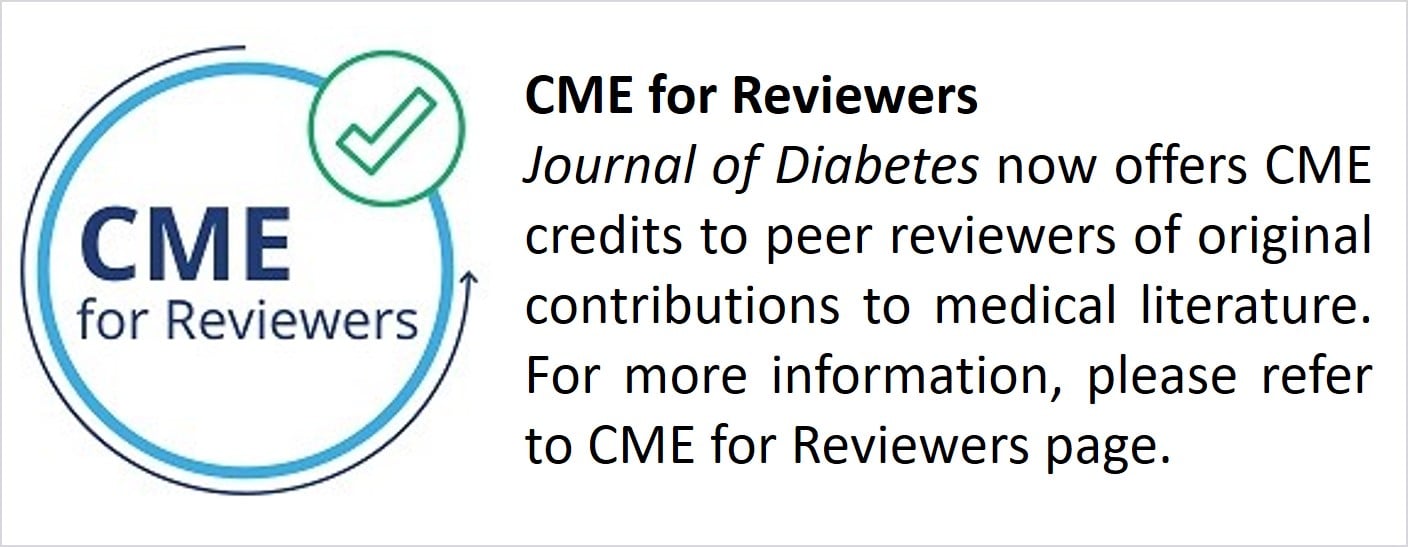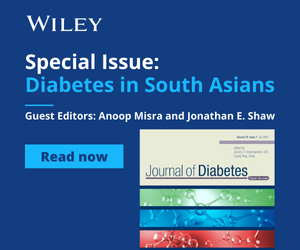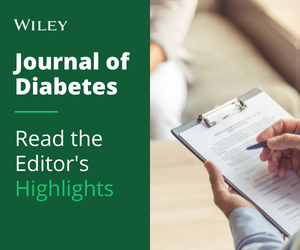Journal list menu
Export Citations
Download PDFs
Table of Contents
Diabetes and tuberculosis syndemic in India: A narrative review of facts, gaps in care and challenges
- First Published: 08 June 2023
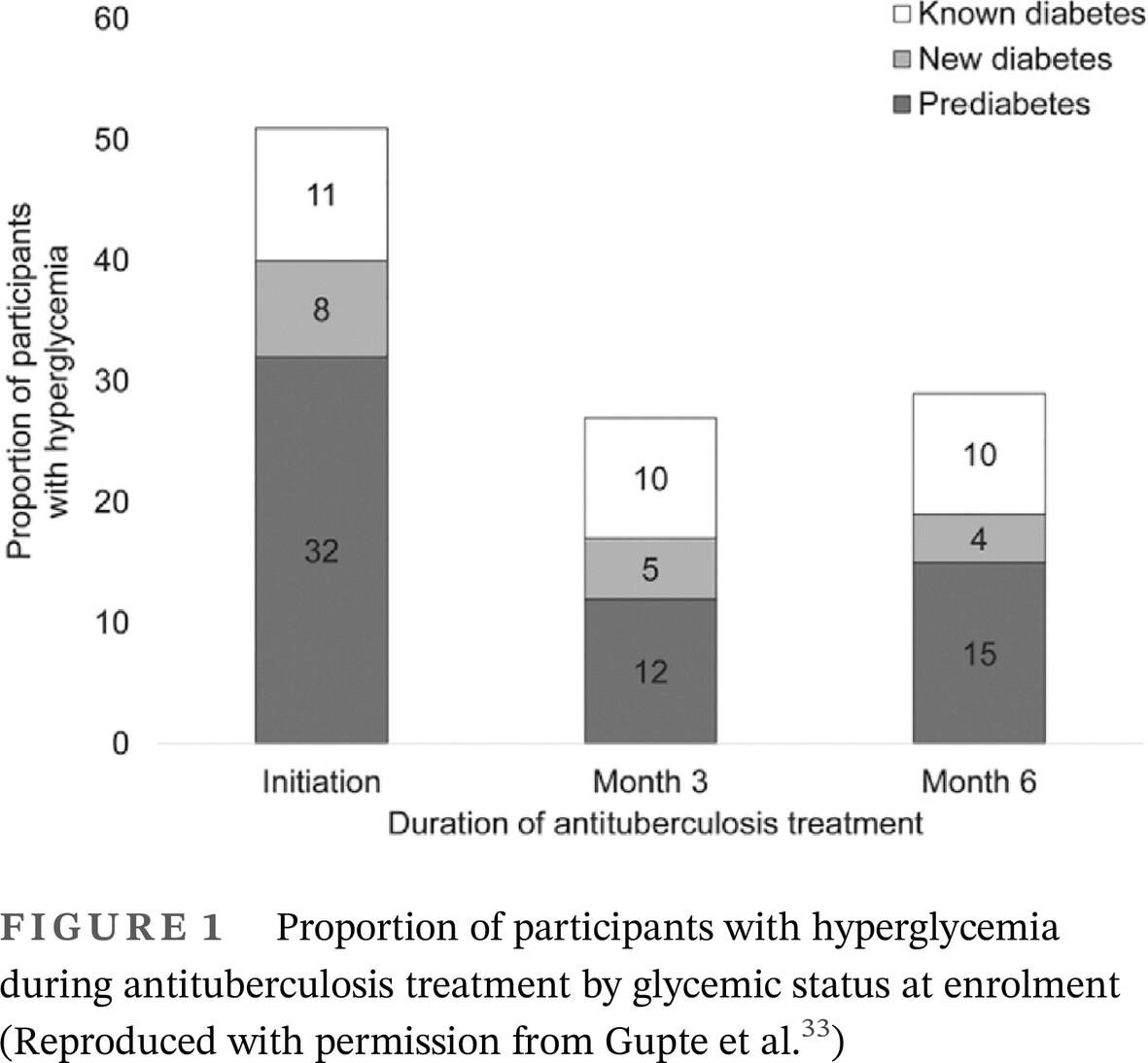
Highlights
- Some data suggest that coexistence of diabetes mellitus and tuberculosis substantially increases the failure of treatment of antituberculosis drugs.
- The COVID-19 pandemic has severely affected the healthcare delivery of tuberculosis-diabetes mellitus patients.
- The tuberculosis-diabetes mellitus syndemic needs a more aggressive focus to have a better outcome.
A comparative study of the gut microbiome in Indian children with type 1 diabetes and healthy controls
- First Published: 28 June 2023
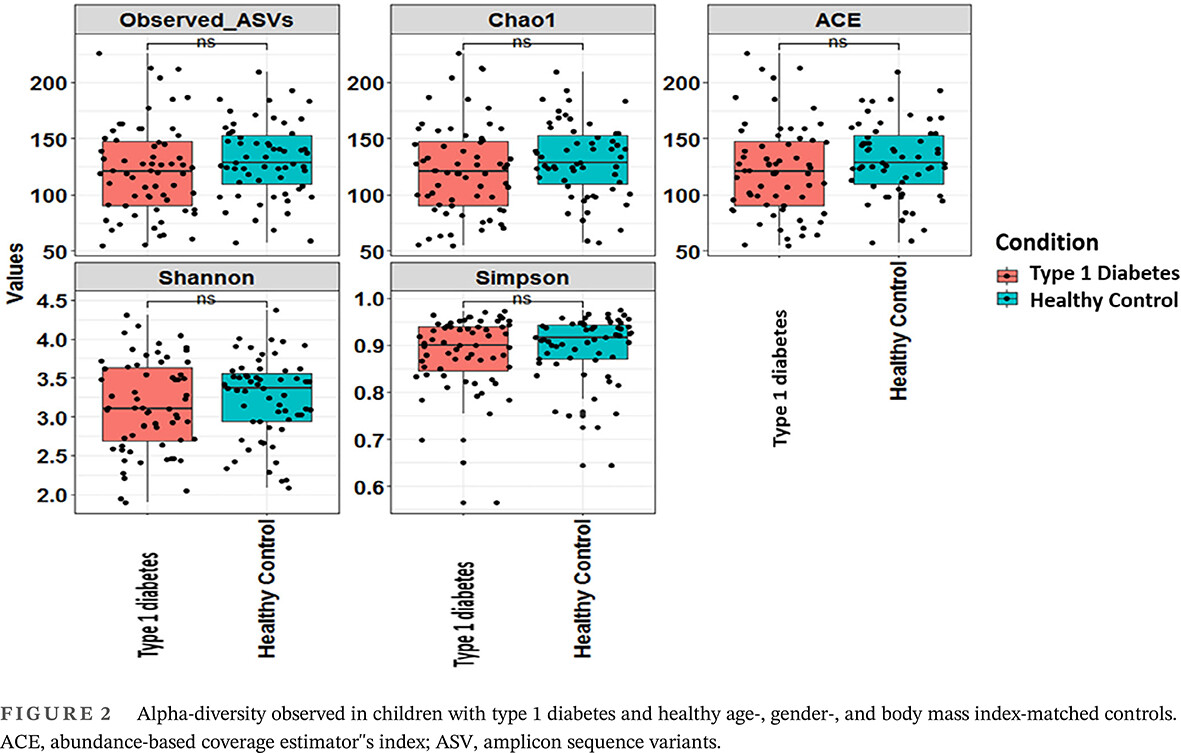
Highlights
- To best of our knowledge, this is the first study conducted to compare the gut microbiome of Indian children with type 1 diabetes mellitus (T1DM) and healthy controls.
- There were significant differences observed in the gut microbiome profile at the genera level of children with T1DM as compared to controls, thus indicating a distinct gut microbial signature in children with type 1 diabetes.
- Short chain fatty acid producers may play an important role as significant predictor of glycemic control in Indian children with T1DM.
Cardiometabolic profile of women with a history of overt diabetes compared to gestational diabetes and normoglycemia in index pregnancy: Results from CHIP-F study
- First Published: 30 August 2023
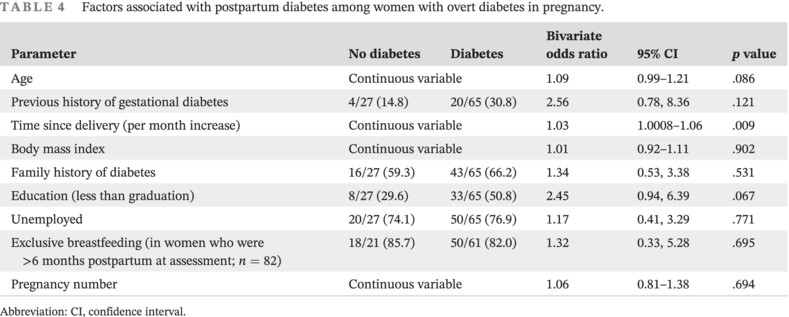
Highlights
- We evaluated the prevalence of postpartum diabetes among women with overt diabetes in pregnancy (ODiP).
- Diabetes was diagnosed in 65 (70.7%) women with ODiP at a median postpartum interval of 29 months.
- The prevalence of diabetes in the ODiP group was 47.4% among women tested in the first year postpartum, increasing to 86.8% among women tested at >3 years postpartum.
- Postpartum diabetes was more common when ODiP was diagnosed in the first (27/29, 93.1%) trimester of pregnancy.
- Postpartum diabetes was more common when ODiP was diagnosed based on glycated hemoglobin (HbA1c) elevation before 15 weeks of gestation (19/20, 95.0%).
Clustering of health behaviors and their associations with cardiometabolic risk factors among adults at high risk for type 2 diabetes in India: A latent class analysis
- First Published: 06 May 2024
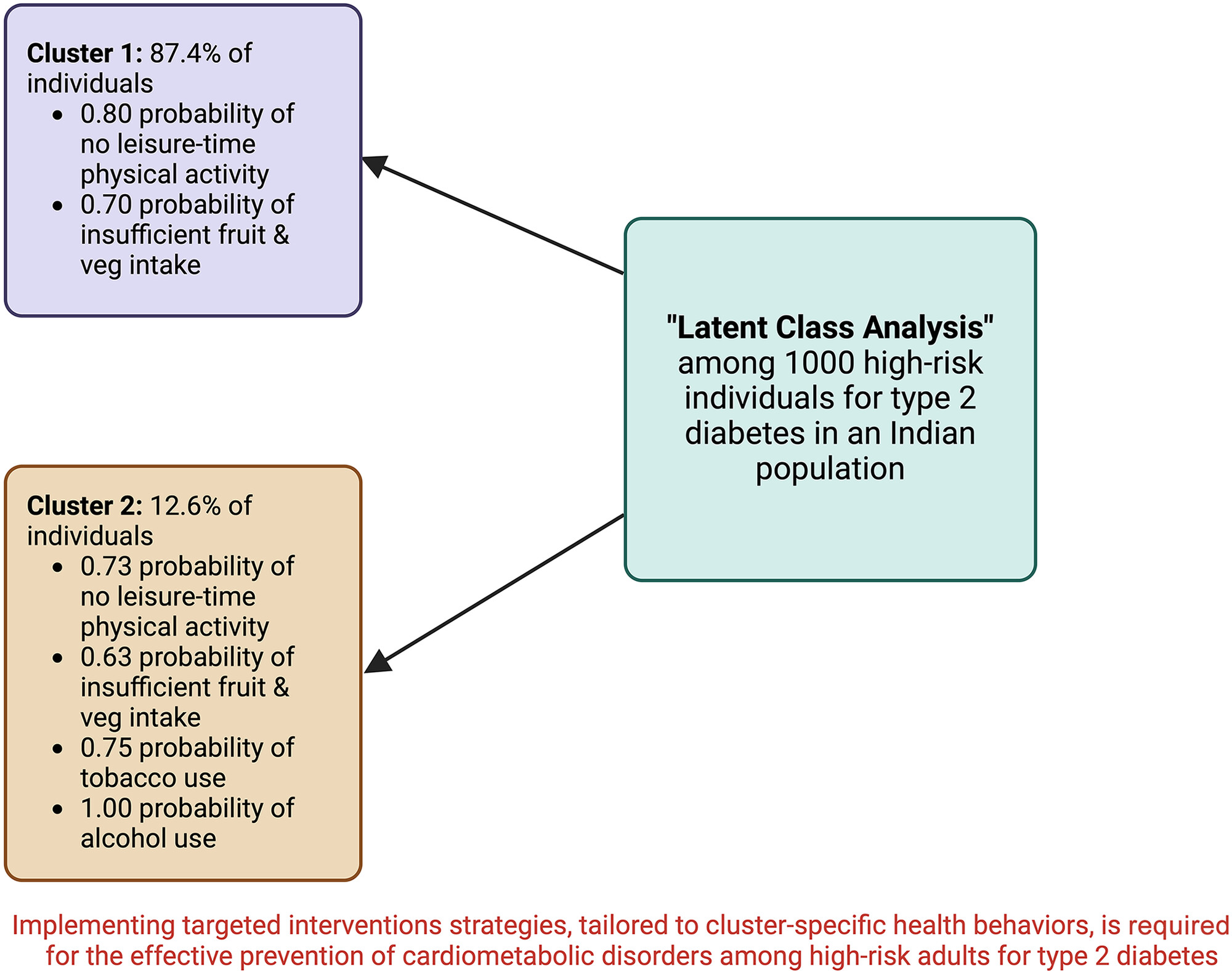
Highlights
- Two clusters of health behaviors were identified in a high-risk population for type 2 diabetes in an Indian setting.
- Individuals in cluster 1 (87.4% of participants) exhibited a high probability of not engaging in leisure-time physical activity and consuming insufficient amounts of fruits and vegetables. This pattern was also observed in cluster 2 (12.6% of participants) in addition to having a high likelihood for tobacco and alcohol use.
- These findings emphasize the importance of interventions targeting cluster-specific health behaviors to prevent cardiometabolic disorders among high-risk individuals for type 2 diabetes.
Antenatal oral glucose tolerance test abnormalities in the prediction of future risk of postpartum diabetes in women with gestational diabetes: Results from the LIVING study
- First Published: 06 May 2024
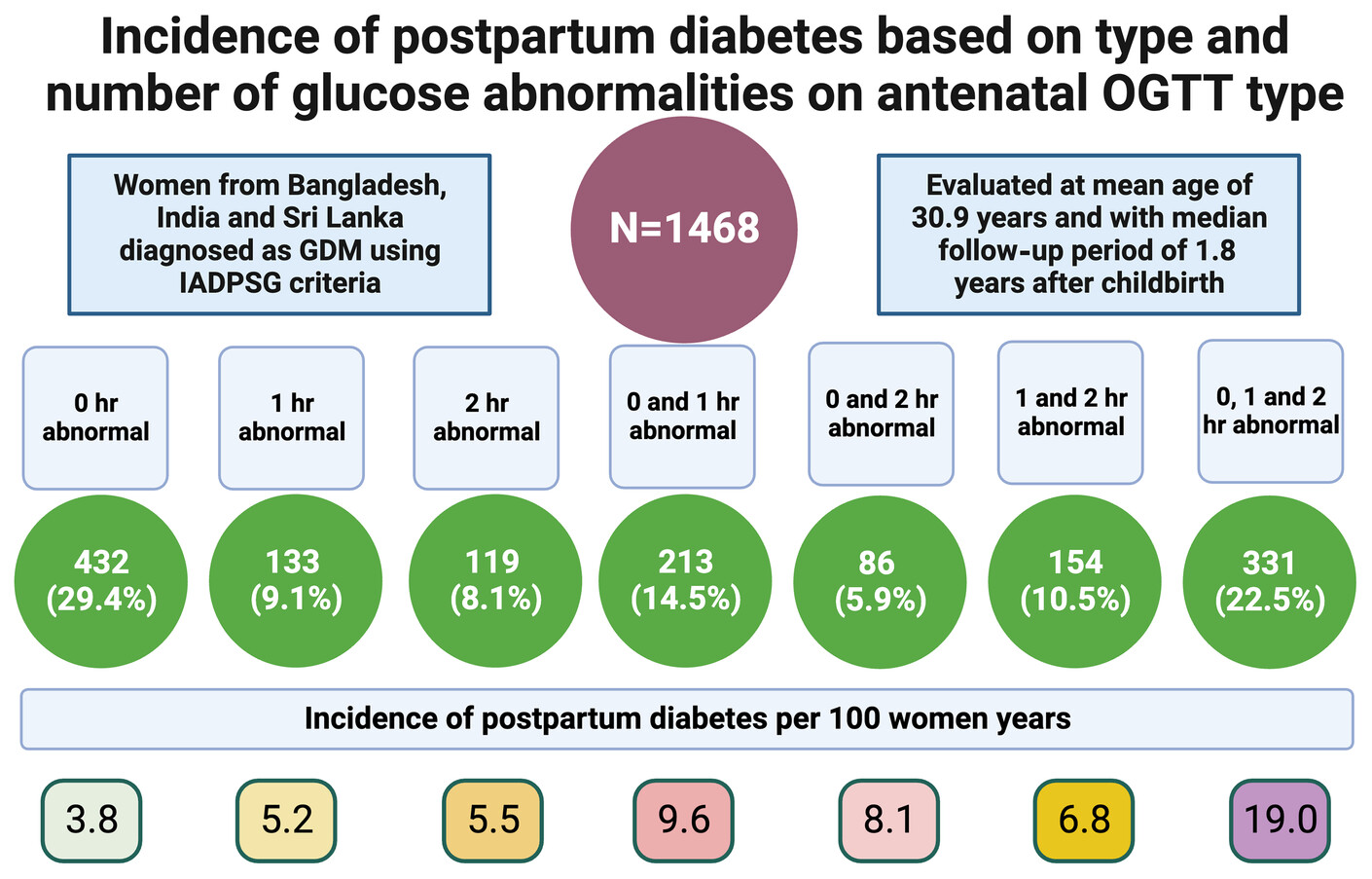
Highlights
- Of the 1468 South Asian women with gestational diabetes, 213 (14.5%) women developed diabetes over median follow-up 1.8 years after childbirth, an incidence rate of 8.7/100 women-years.
- The incidence rates for participants with any one, two, and three abnormal values on antenatal oral glucose tolerance test (OGTT) were 4.3, 8.3 and 19.0/100 women years.
- The rates of future diabetes in this high-risk cohort varied considerably with antenatal OGTT values, providing the opportunity for targeted intervention to prevent future diabetes.
The rising prevalence of type 2 diabetes among the youth in southern India—An ancillary analysis of the Secular TRends in DiabEtes in India (STRiDE-I) study
- First Published: 26 June 2024
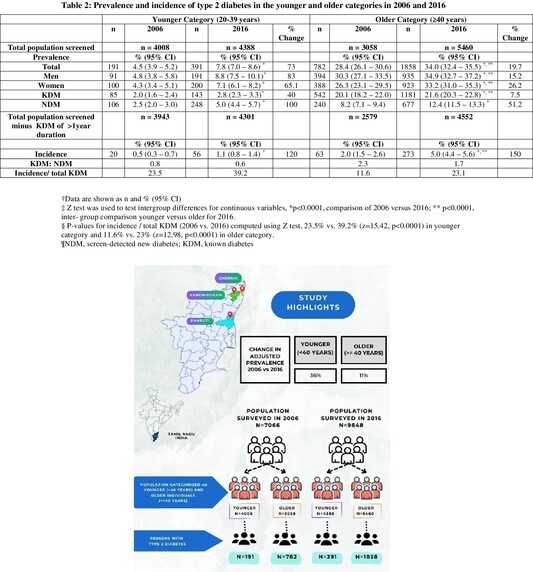
Highlights
- The study reports a comparative profile on prevalence and incidence of T2DM and its associated risk factors in the younger and the older individuals in 2006 and 2016.
- Prevalence of T2DM increased both in the younger (36%) and older individuals (11%) in a decade's time.
- Incidence rose by 120% in the younger individuals and 150% in the older group.
- Percentage increase in cardiometabolic risk was higher among the younger than in the older individuals.
- Obesity and family history of diabetes were the primary contributing factors for the rising prevalence in both groups.
Effect of patient-centered self-management intervention on glycemic control, self-efficacy, and self-care behaviors in South Asian adults with type 2 diabetes mellitus: A multicenter randomized controlled trial
- First Published: 12 September 2024
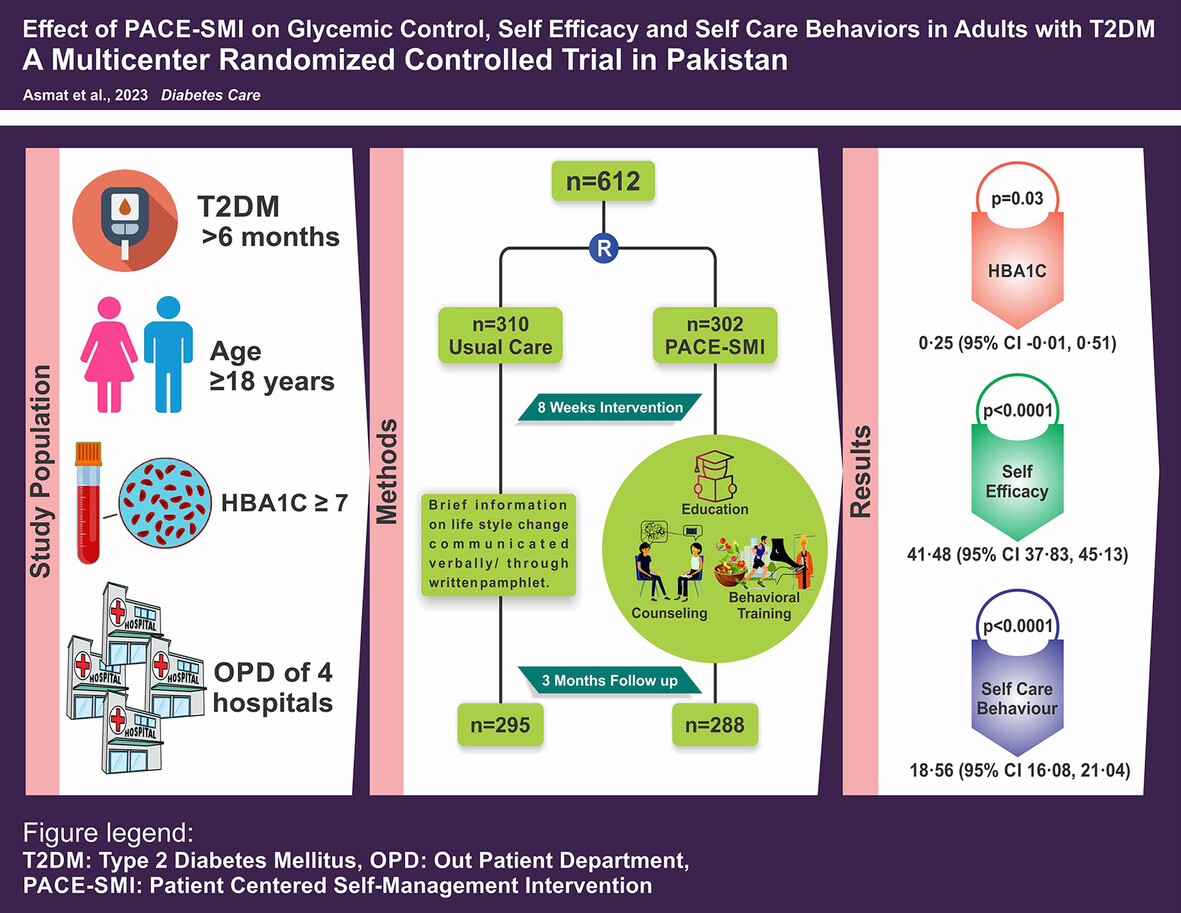
Highlights
- T2DM dominates worldwide, especially in the low middle income countries (LMICs) of South Asia.
- Despite acknowledging self-management as the corner stone in T2DM, LMICs face an implementation gap due to lacking policies and the fragmented care systems, neglecting crucial personal, behavioral, and social factors.
- In this first large-scale multicenter randomized controlled trial conducted in Pakistan, a LMIC, the nurse-led PACE-SMI demonstrated significant improvement in HbA1c, self-efficacy, and self-care behaviors in adults with T2DM at 3 months.
- Considering the substantial health and economic impact of T2DM in LMICs, evidence presented in this study holds implications for the healthcare policies, advocating for integration of PACE-SMI into standard practice.






